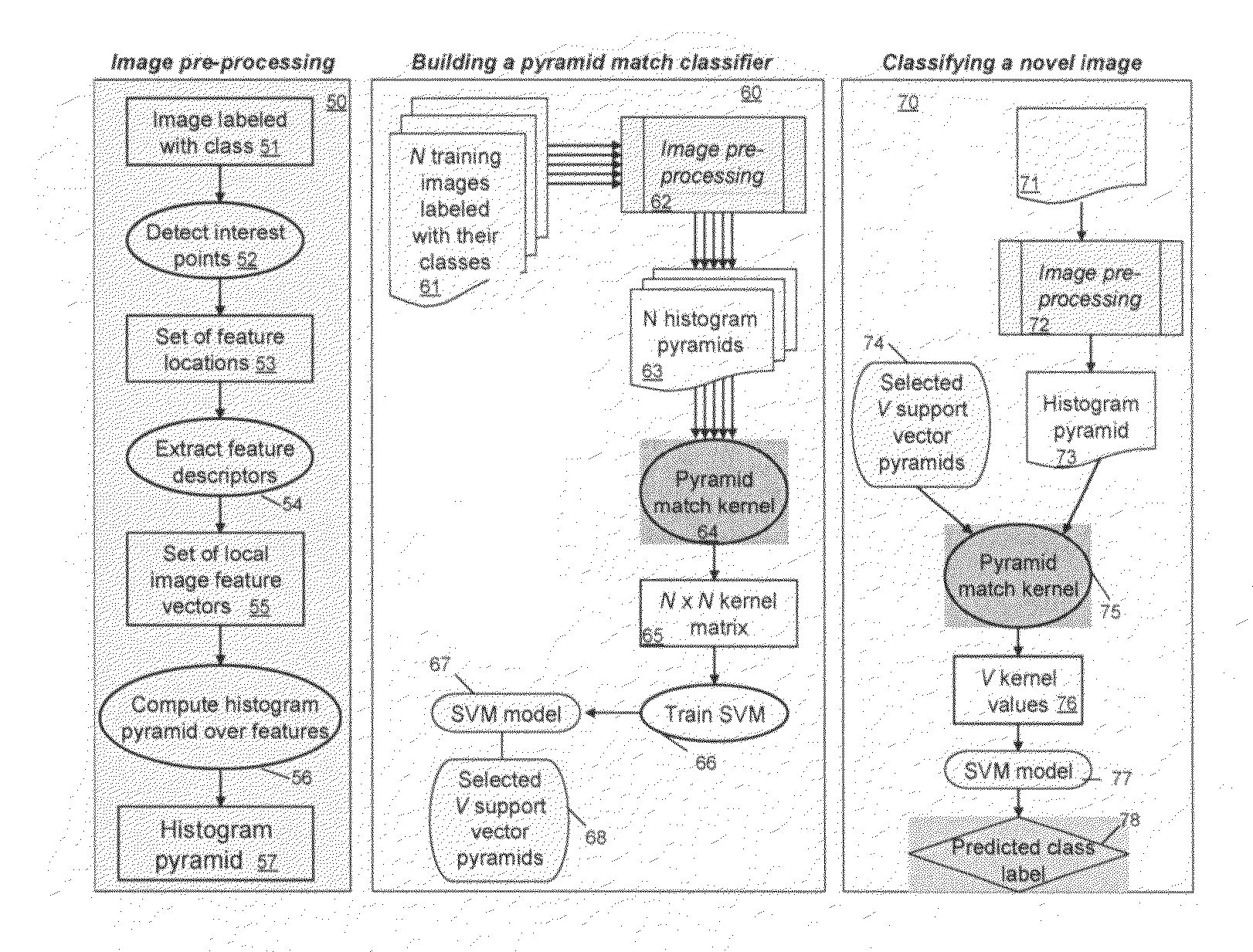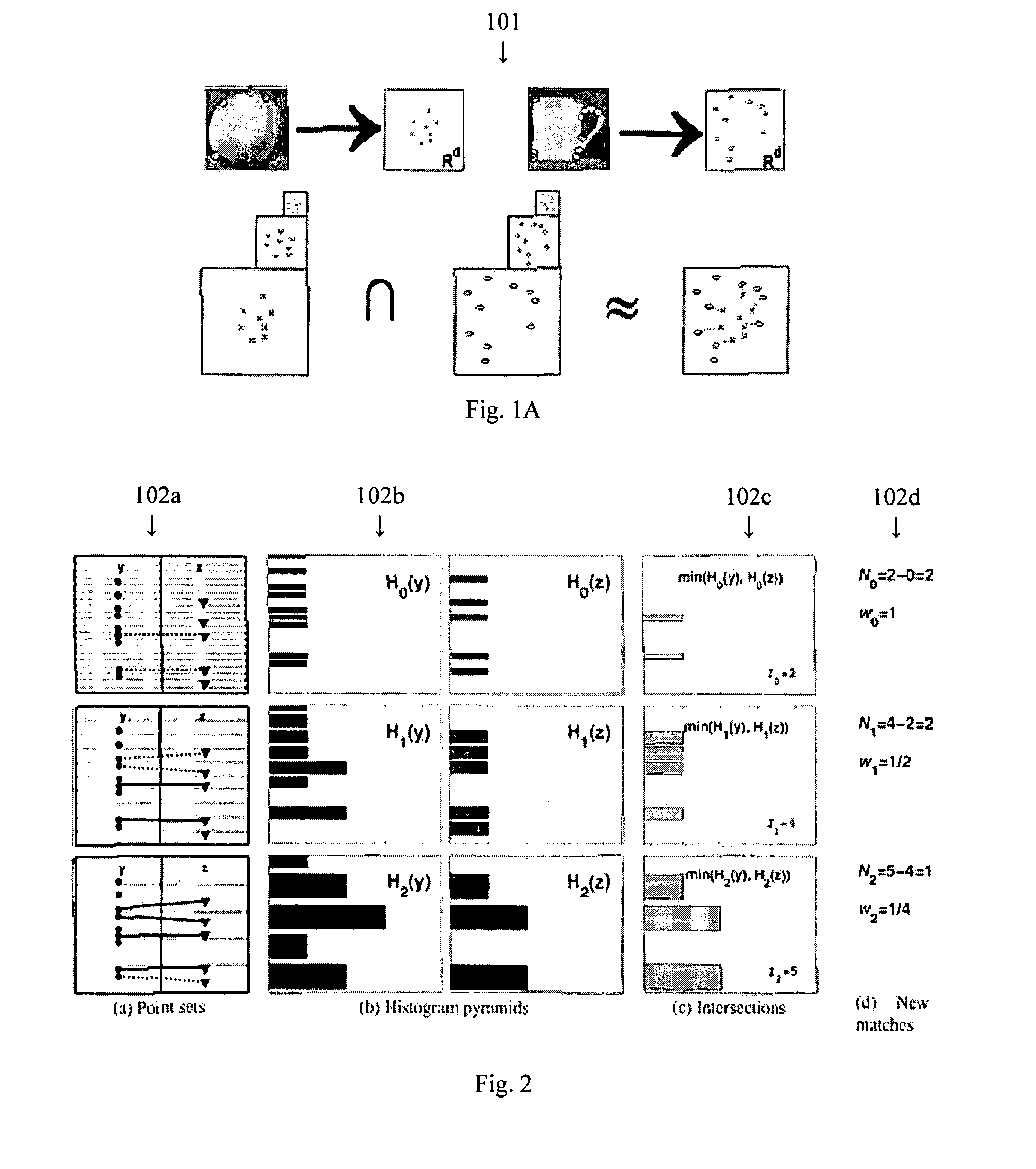Pyramid match kernel and related techniques
a technology of pyramid and matching kernel, applied in the field of computer search and retrieval systems, can solve the problems of inability to meet the needs of large training sets, etc., and achieve the effect of faster search
- Summary
- Abstract
- Description
- Claims
- Application Information
AI Technical Summary
Benefits of technology
Problems solved by technology
Method used
Image
Examples
Embodiment Construction
[0045]A data object recognition and computer searching and retrieval system 100 is illustrated in FIG. 1. An image signal source, such as an electronic still camera 10 or a scanner 12, provides an electronic image signal which represents an image of a subject (not shown). A computer 18 receives the electronic signal from the image signal source and thereafter processes the image signal electronically to provide any number of known image processing functions. The processed image is then transmitted, i.e. output, to a destination device or destination application such as a diskette 16, an user monitor 20, a printer 14, a remote monitor 26 or any other device or computer (not shown) connected to the network 28. Operator interaction with the system is facilitated by use of a keyboard 22 or a mouse 24. It should be noted that the components shown in FIG. 1 are exemplary rather than all inclusive of the many equivalent devices known by those skilled in the art. For instance, any image sig...
PUM
 Login to View More
Login to View More Abstract
Description
Claims
Application Information
 Login to View More
Login to View More - R&D
- Intellectual Property
- Life Sciences
- Materials
- Tech Scout
- Unparalleled Data Quality
- Higher Quality Content
- 60% Fewer Hallucinations
Browse by: Latest US Patents, China's latest patents, Technical Efficacy Thesaurus, Application Domain, Technology Topic, Popular Technical Reports.
© 2025 PatSnap. All rights reserved.Legal|Privacy policy|Modern Slavery Act Transparency Statement|Sitemap|About US| Contact US: help@patsnap.com



